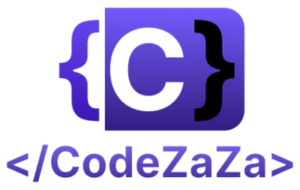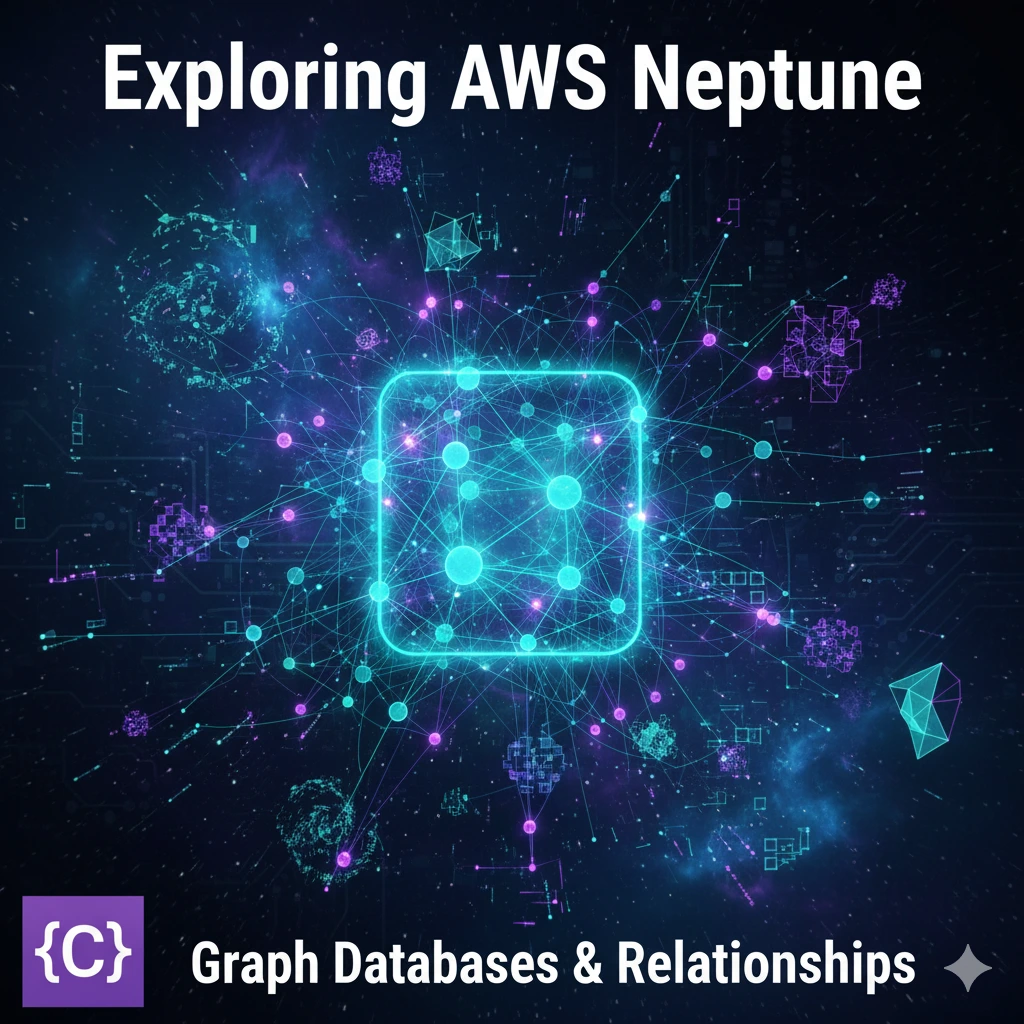the age of big data, understanding relationships and connections within data has become increasingly crucial. Whether you’re mapping social networks, tracking supply chains, or managing recommendation engines, traditional databases often fall short when it comes to handling complex, interconnected data. AWS Neptune, Amazon’s fully managed graph database service, addresses this need, providing a scalable, high-performance solution for building applications that rely on relationships.
AWS Neptune simplifies the complexities of managing a graph database and allows developers and data scientists to focus on building insights from relationships instead of worrying about infrastructure. This article dives into what AWS Neptune is, its key features, real-world applications, and practical tips for making the most of it. By the end, you’ll see why AWS Neptune is transforming how we work with relationship-driven data and why it’s a must-have for modern applications.
What is AWS Neptune?
AWS Neptune is a fully managed graph database service. It efficiently handles highly connected datasets. Moreover, it supports two popular graph models: Property Graph (queries with Gremlin) and RDF (queries with SPARQL). This flexibility lets you choose the best model for your use case.
Additionally, Neptune executes complex queries on large datasets with low latency. Therefore, it is ideal for applications that explore relationships, patterns, and connections in real time. You can use Neptune to build social networks, recommendation engines, fraud detection systems, or knowledge graphs. Overall, it provides the performance and scalability that demanding applications need.
Why Use AWS Neptune?
AWS Neptune provides significant advantages for applications that need to manage complex, connected data:
- High Performance and Scalability: Neptune is optimized for graph queries, delivering fast response times even with millions of nodes and edges. It scales horizontally and supports read replicas, ensuring high availability.
- Fully Managed Service: AWS Neptune takes care of database management, including backups, patching, and maintenance, freeing you from the complexities of running a graph database.
- Flexible Graph Models: Neptune supports both Property Graph and RDF, making it versatile for various use cases, from social graphs to knowledge graphs.
- Seamless Integration with AWS Services: Neptune integrates with other AWS services like S3, CloudWatch, Lambda, and SageMaker, enabling you to create powerful, interconnected applications.
- Secure and Compliant: With VPC isolation, encryption at rest and in transit, and IAM integration, Neptune offers robust security measures, making it suitable for sensitive applications and compliant with industry standards.
These features make AWS Neptune a great choice for businesses that need to derive insights from complex relationships within their data.
Key Features of AWS Neptune
AWS Neptune comes packed with features tailored to support the unique requirements of graph databases. Here’s an overview of some of its standout capabilities:
1. Dual Graph Model Support: Property Graph and RDF
Neptune supports two graph models. You can use the Property Graph model with Gremlin or the RDF model with SPARQL. This flexibility helps you pick the model that fits your application. For instance, Property Graphs work well for social networks, while RDF suits knowledge graphs and ontologies.
2. High-Performance Graph Queries
Neptune handles complex graph queries with low latency. Therefore, it is perfect for applications that explore connections in real time. Its engine is optimized for traversing large, highly connected datasets, ensuring fast responses even with millions of nodes and edges.
3. Automated Backups and Point-in-Time Recovery
Neptune continuously backs up your data to Amazon S3. As a result, you can restore your database to any point in time. This feature protects data integrity and ensures quick recovery in case of failures.
4. Horizontal Scaling and High Availability
Neptune supports up to 15 read replicas across multiple Availability Zones. This setup distributes traffic, boosts query performance, and keeps your database available during infrastructure issues.
5. Integration with Machine Learning via Amazon SageMaker
Neptune integrates with Amazon SageMaker for machine learning applications. You can predict relationships, detect patterns, or build recommendation systems directly on your graph data. This integration enhances insights and decision-making.
Real-World Use Cases for AWS Neptune
AWS Neptune can be applied across various industries, from social media and e-commerce to healthcare and finance. Here are some examples of real-world applications:
1. Social Network Analysis and Recommendations
Social media platforms and online communities use graph databases to understand user connections and provide recommendations. For example, AWS Neptune can help identify relationships between users based on shared interests, mutual friends, or other factors, enabling personalized recommendations and a more engaging user experience.
2. Fraud Detection in Financial Services
In the financial sector, Neptune can be used to analyze transaction relationships to detect unusual patterns that may indicate fraud. By mapping relationships between entities such as users, accounts, and transactions, Neptune can help uncover complex fraud rings, flagging suspicious activities in real time.
3. Product Recommendation Engines in E-commerce
E-commerce companies leverage graph databases to power recommendation engines. Neptune can identify similarities between products, users, and purchase histories, allowing businesses to deliver highly personalized product recommendations. By analyzing user interactions and purchase patterns, Neptune enhances the customer experience and drives higher conversions.
4. Knowledge Graphs for Healthcare and Research
Healthcare and research organizations use knowledge graphs to map relationships between genes, diseases, treatments, and research papers. Neptune’s RDF support makes it ideal for building knowledge graphs that help researchers discover new connections and insights, accelerating the development of innovative treatments and improving patient outcomes.
Getting Started with AWS Neptune: A Quick Guide
Ready to explore AWS Neptune? Here’s a simple guide to getting started with your first Neptune database:
- Create a Neptune Cluster: In the AWS Management Console, navigate to Neptune and create a new database cluster. Configure your VPC, subnets, and security settings to ensure that the database is isolated and secure.
- Choose a Graph Model: Decide between Property Graph (Gremlin) or RDF (SPARQL) based on your application needs. Each model has its strengths, so choose the one that best suits your data structure and query requirements.
- Load Data: Use Amazon S3 to import data into Neptune. You can upload CSV files for Property Graphs or RDF files for RDF-based graphs. Neptune’s bulk loader makes it easy to load large datasets efficiently.
- Query the Data: Use Gremlin or SPARQL to query the data. Both query languages have extensive documentation and support complex queries, enabling you to retrieve insights and explore relationships within your data.
- Monitor with CloudWatch: Enable Amazon CloudWatch to monitor key metrics like CPU utilization, memory usage, and query latency. Set up alarms to notify you of any unusual behavior that could impact performance or availability.
- Scale and Optimize: Configure read replicas to improve query performance, and consider using multi-AZ deployments for high availability. Adjust your cluster size as needed to meet demand and optimize costs.
Comparison with Other Graph Databases
| Feature | AWS Neptune | Neo4j | Amazon DynamoDB (with Graph model) | JanusGraph |
|---|---|---|---|---|
| Type | Fully managed graph database, with maintenance, backups, and scaling handled by AWS. | Native graph database, but self-managed unless using Neo4j Aura cloud. | Key-value and document database; graph support via plugins. | Open-source graph database requiring self-management. |
| Graph Models | Supports Property Graphs (Gremlin) and RDF graphs (SPARQL). | Works with Property Graphs using Cypher query language. | Supports Property Graphs via TinkerPop/Gremlin plugins, but not native. | Supports Property Graphs with Gremlin, relies on backends like Cassandra or HBase. |
| Query Language | Gremlin and SPARQL. | Cypher. | Gremlin. | Gremlin. |
| Managed Service | Fully managed by AWS (servers, patching, backups). | Only managed on Neo4j Aura; otherwise self-managed. | Self-managed; AWS doesn’t provide full graph DB service. | Self-managed setup, scaling, and maintenance. |
| Scalability | Horizontal scaling with up to 15 read replicas across AZs. | Enterprise supports clustering; community limited. | Limited scalability due to DynamoDB partitioning. | Horizontal scaling depending on backend (Cassandra/HBase). |
| High Availability | Multi-AZ deployment with automatic failover. | Enterprise version supports HA; community limited. | HA depends on DynamoDB setup. | HA depends on backend storage setup. |
| Integration with AWS | Seamless with S3, Lambda, SageMaker, CloudWatch. | Limited AWS integration. | Good integration since DynamoDB is native to AWS, but graph is not. | Limited integration, custom setup required. |
| Performance | Optimized for low-latency queries on highly connected datasets. | Strong for transactional queries and real-time recommendations. | Performance varies by partitioning and plugin layer. | Performance tied to backend choice and configuration. |
| Cost | Pay-as-you-go pricing based on usage and instance type. | Requires enterprise/cloud license; self-hosted free. | Pay-as-you-go for DynamoDB, plus plugin management. | Free/open-source, but infra and ops cost apply. |
| Best Use Cases | Social networks, recommendation engines, fraud detection, knowledge graphs. | Real-time recommendations, fraud detection, social network analysis. | Existing DynamoDB apps needing light graph overlay. | Large-scale, self-managed graph apps with custom backends. |
Tips for Optimizing AWS Neptune
To maximize the potential of AWS Neptune, consider these best practices:
- Optimize Query Performance: Graph queries can be complex, so optimize your Gremlin or SPARQL queries to reduce execution time. Use indexing and caching for frequently accessed data to minimize latency.
- Use Read Replicas for High Performance: Distribute read queries across multiple replicas to balance the load, especially in read-heavy applications. Neptune supports up to 15 read replicas, which can significantly enhance query performance.
- Implement Data Access Control with IAM: Use IAM policies to control access to your Neptune clusters, restricting permissions based on roles and ensuring only authorized users can access the data.
- Leverage CloudWatch for Monitoring: Monitor performance metrics in real time using CloudWatch. Enable alarms for critical metrics like CPU utilization and disk space to maintain optimal performance and detect issues early.
- Choose the Right Graph Model: Ensure you’re using the correct graph model for your application. Property Graphs (Gremlin) are suitable for social networks, while RDF (SPARQL) is ideal for knowledge graphs and applications with a hierarchical structure.
Why AWS Neptune is the Best Graph Database for Relationship-Driven Applications
AWS Neptune is a powerful tool for any business or developer working with relationship-driven data. Its graph model flexibility, high performance, and seamless integration with AWS services make it an ideal choice for applications that need to explore connections within data. Neptune empowers developers to build complex data-driven applications with ease, enabling insights from relationships that would otherwise go unnoticed.
Whether you’re working on a social network, fraud detection system, recommendation engine, or knowledge graph, AWS Neptune provides the scalability and speed to help you get the most out of your data. Embrace the power of graph databases with AWS Neptune, and unlock the insights hidden within your connected data!
Have you tried AWS Neptune in your projects? Share your experiences and insights in the comments below, and let’s discuss how Neptune is transforming relationship-driven applications!


